Kubernetes and Cloud Native Security Associate (KCSA)
Overview of Cloud Native Security
Cloud Provider Security
In our Cats and Dogs election simulation, the attacker’s first move—after identifying host IPs—was a port scan. They discovered port 2375 (Docker) wide open, marking an entry point into the host and underlying Kubernetes infrastructure.
zsh port-scan.sh 104.21.63.124
21 for ftp ... Fail
22 for ssh ... Fail
…
2375 for docker... Success
…
~ took 4s
Warning
Exposed Docker ports (2375) allow unauthenticated remote container management. Always restrict access or enable TLS authentication.
A simple preventative measure is a network firewall. By filtering traffic based on IP, port, and protocol, you can hide or block open ports on your servers.
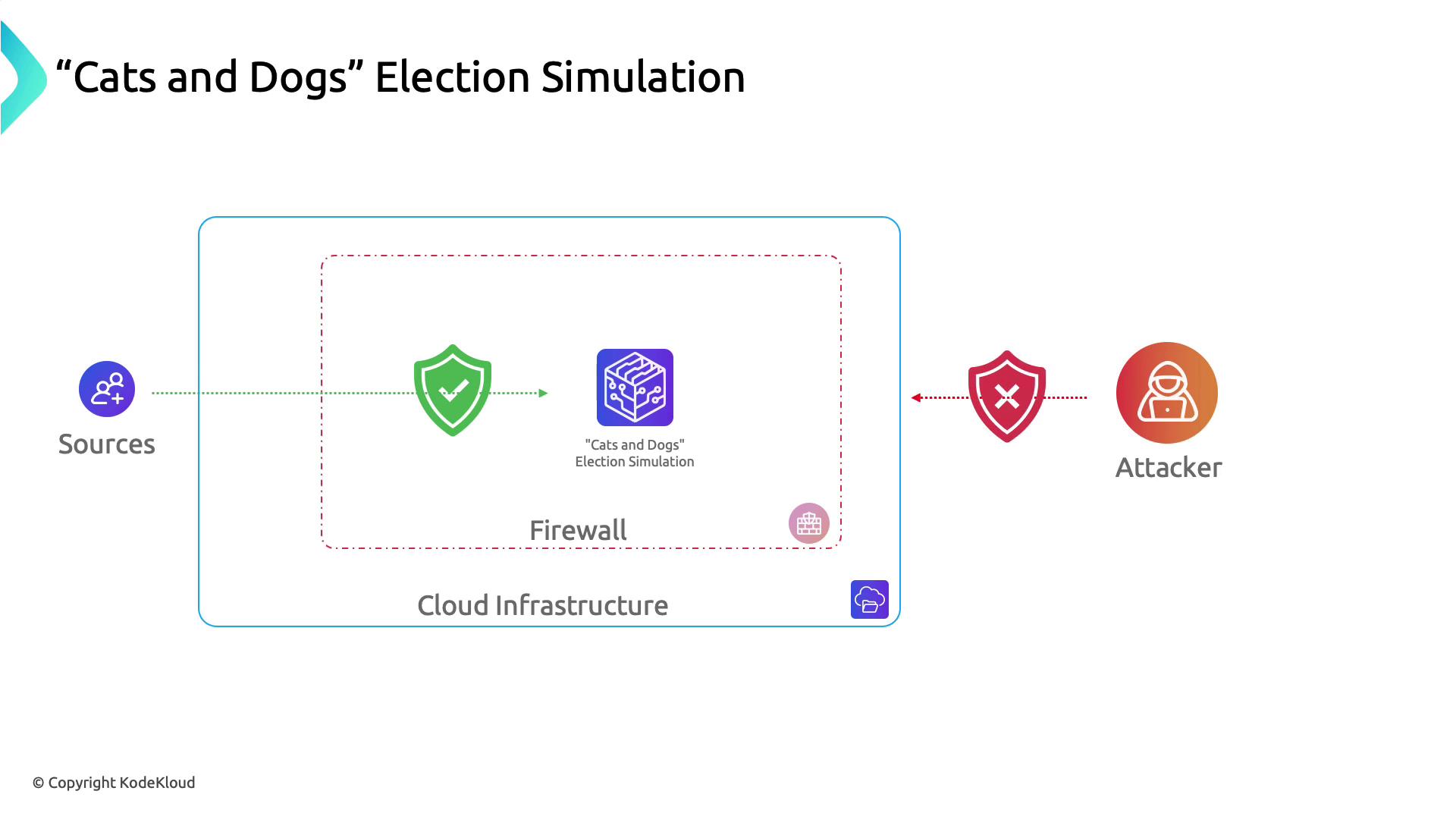
Cloud providers (AWS, Azure, GCP) supply multiple layers of infrastructure security—ranging from firewalls to advanced threat detection, WAFs, and container defenses. Below is an overview of these capabilities.
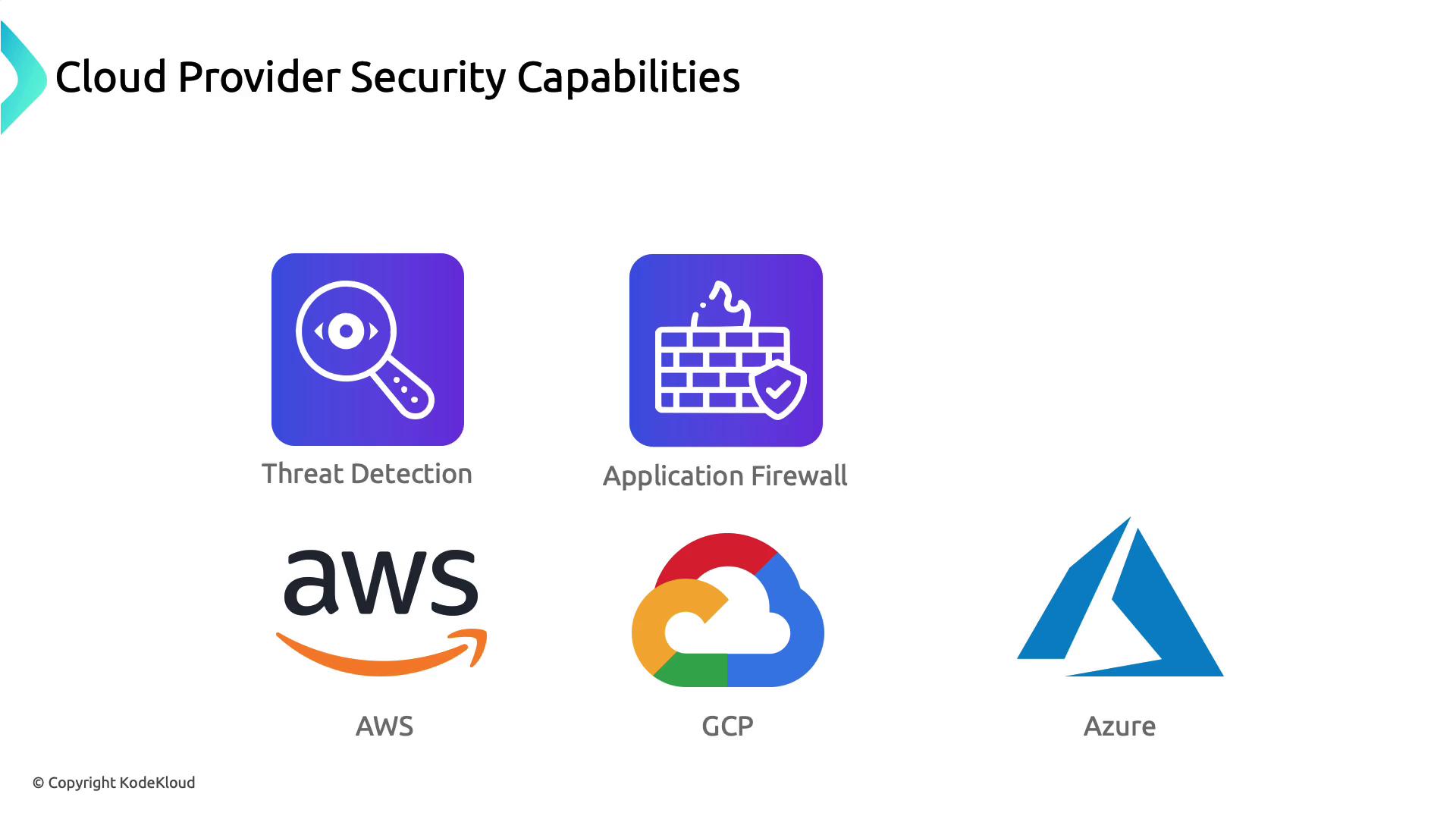
Threat Management and Response
All three major cloud platforms offer managed SIEM/SOAR-style tools for continuous threat monitoring and automated response.
| Provider | Service | Description | Docs |
|---|---|---|---|
| Azure | Azure Sentinel | Integrated SIEM + SOAR for threat detection, hunting, and automated playbooks. | https://docs.microsoft.com/azure/sentinel |
| AWS | Amazon GuardDuty | ML-driven threat detection for AWS accounts and workloads, no rule authoring required. | https://aws.amazon.com/guardduty |
| GCP | Security Command Center (SCC) | Centralized dashboard for asset inventory, vulnerability scanning, and threat insights. | https://cloud.google.com/security-command-center |
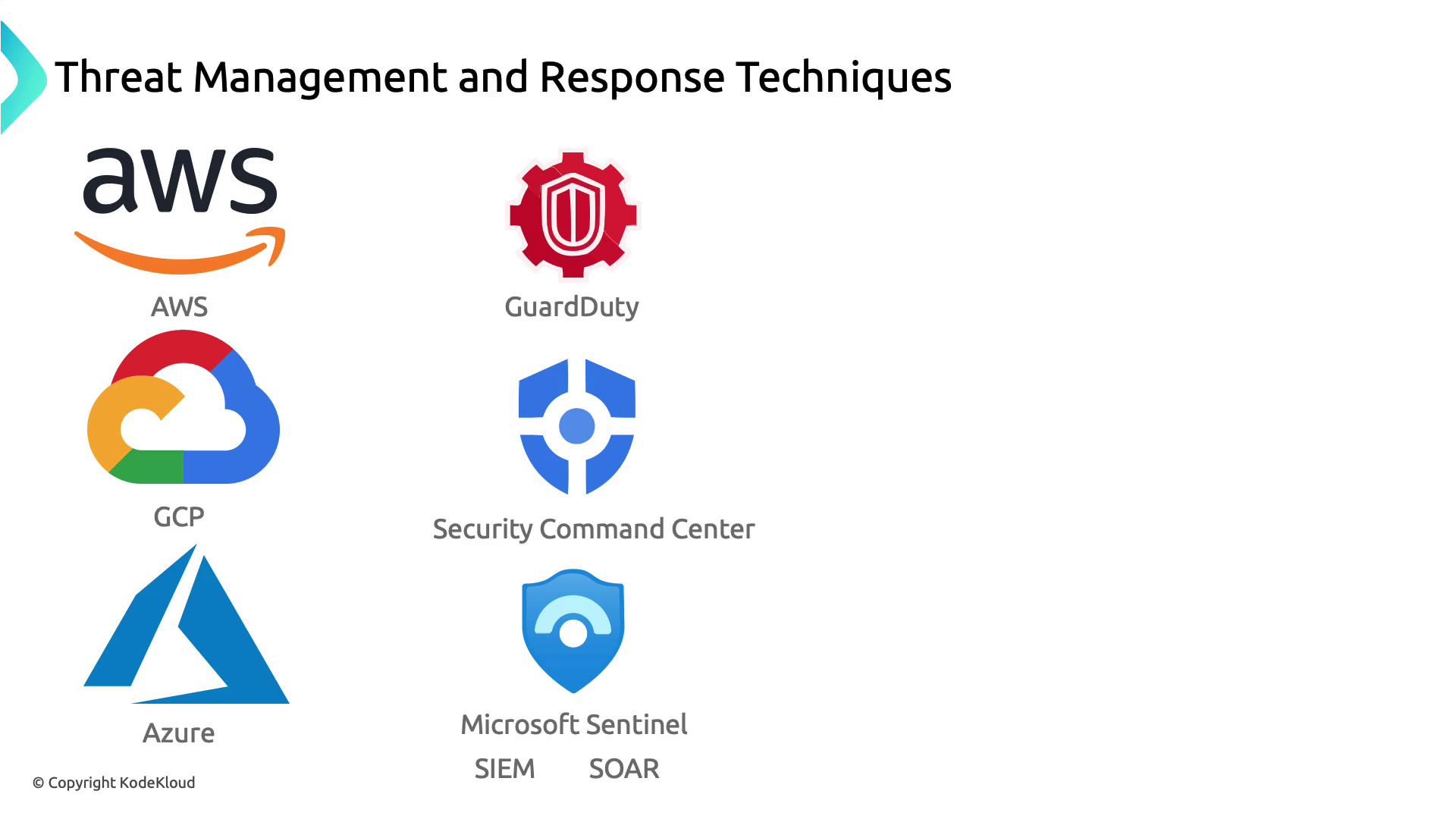
Web Application Firewalls (WAF)
To defend against OWASP Top 10 attacks and DDoS, each provider offers a native WAF solution.
| Provider | Service | Key Features | Docs |
|---|---|---|---|
| Azure | Azure WAF | Integrated with Application Gateway, OWASP rule sets, custom rules. | https://docs.microsoft.com/azure/web-application-firewall |
| AWS | AWS WAF | Custom rule creation, integration with CloudFront & ALB, real-time metrics. | https://docs.aws.amazon.com/waf |
| GCP | Cloud Armor | DDoS protection, geo-based access controls, custom security policies. | https://cloud.google.com/armor |

Container Security
Container orchestration platforms combine built-in controls with ecosystem tools to enforce runtime and image compliance.
| Provider | Service | Security Features | Docs |
|---|---|---|---|
| Azure | Azure Kubernetes Service (AKS) | Control-plane hardening, Azure Policy integration, image scanning. | https://docs.microsoft.com/azure/aks |
| AWS | Amazon EKS + Bottlerocket | Bottlerocket OS, kube-bench CIS checks, IAM roles for service accounts. | https://aws.amazon.com/eks<br>https://aws.amazon.com/bottlerocket |
| GCP | Google Kubernetes Engine (GKE) | Private clusters, Anthos policy enforcement with OPA, binary authorization. | https://cloud.google.com/kubernetes-engine<br>https://www.openpolicyagent.org/ |
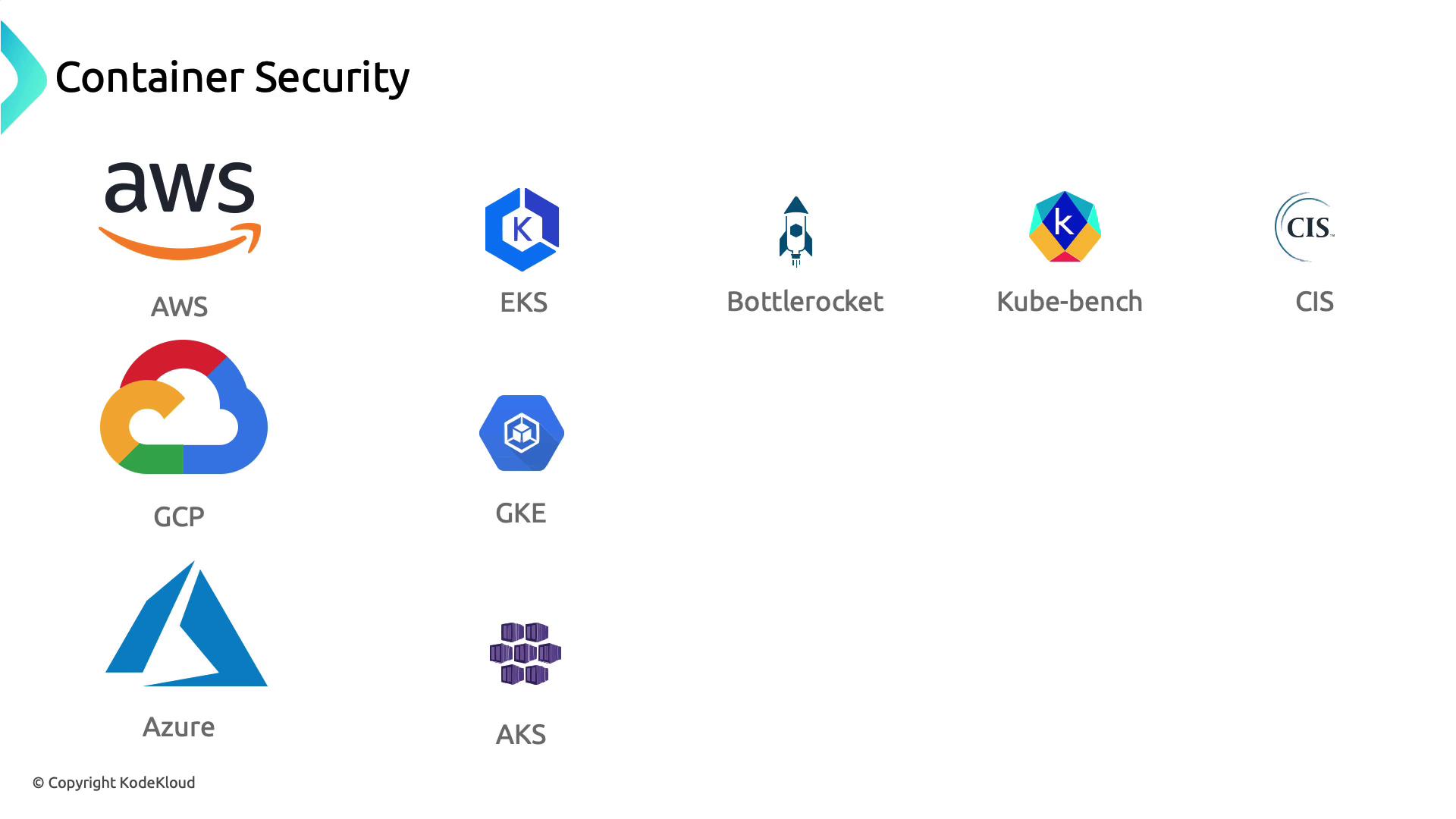
Shared Responsibility Model
Cloud security is a partnership: the provider secures the cloud infrastructure, and you secure your workloads in the cloud.

Every service tier (IaaS, PaaS, SaaS) shifts certain responsibilities. In AWS, for example, customers manage security in the cloud, while AWS handles security of the cloud.
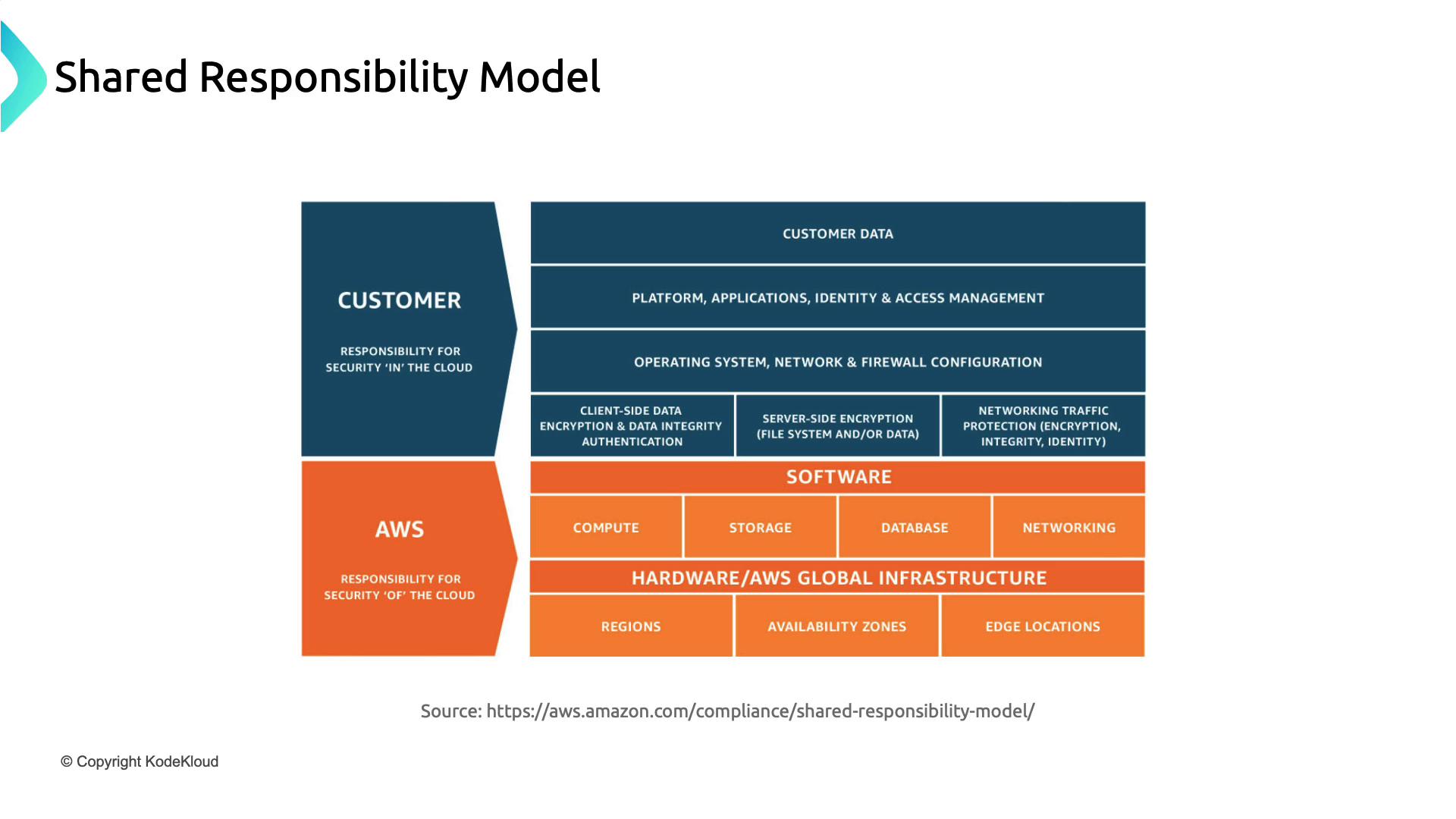
Note
Review the shared responsibility matrix for each cloud provider to ensure you cover all security controls—from networking rules to application hardening.
In this article, we examined how Azure, AWS, and Google Cloud approach:
- Threat Management & Response
- Web Application Firewalls
- Container Security
- The Shared Responsibility Model
Next, we’ll move into deeper infrastructure security practices.

Watch Video
Watch video content